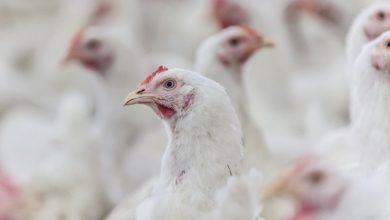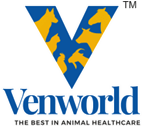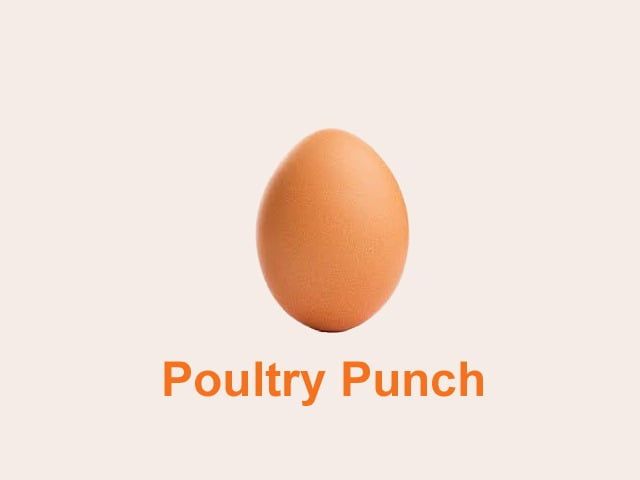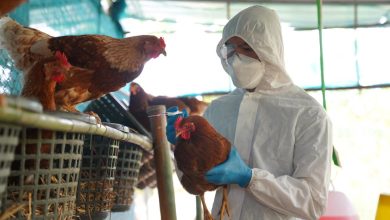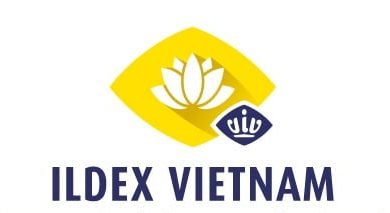Huvepharma Makes Case For Salinomycin As Poultry Industry
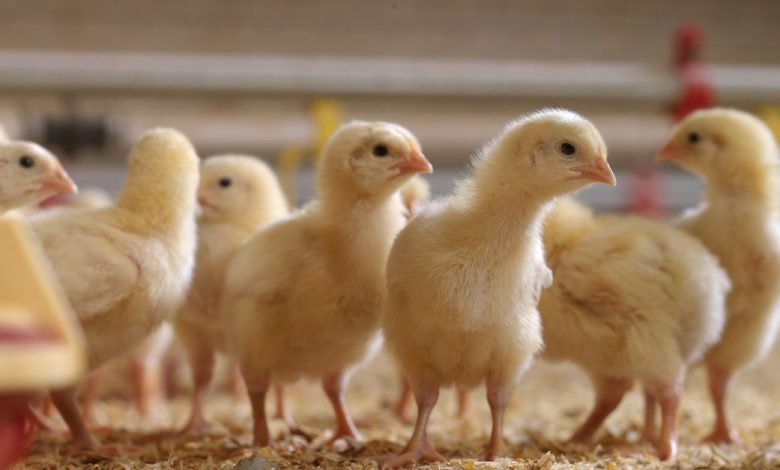
Huvepharma Makes Case for Salinomycin (Sacox®) as
Poultry Industry’s Ionophore of Choice: INDUSTRY PERSPECTIVES
Ben Dehaeck, the company’s Global Product Manager for Coccidiostats, Huvepharma
Coccidiosis remains one of the most significant threats to poultry production worldwide, with the disease costing the industry billions annually. In addition to the direct losses from mortality and decreased growth rates, suboptimal control of coccidiosis can also result in decreased feed efficiency, increased susceptibility to other diseases, and the need for increased use of antibiotics.
Now, while there are a number of control measures available, including vaccination and management practices, the use of ionophores remains one of the most effective and cost-efficient means of combating the disease by preventing the development of Eimeria – the parasite which causes coccidiosis – by disrupting its ability to multiply and invade the intestinal cells of birds.
Since the introduction of the first ionophore, monensin, in the 1970s, more have made it to market, with salinomycin, of which Huvepharma is the sole supplier in Europe (Sacox®) and the US (Bio-Cox®), having become a firm favourite for poultry producers according to Ben Dehaeck, the company’s Global Product Manager for Coccidiostats. In fact, he told Feedinfo in a recent interview that the company believes it to be the “gold standard” in ionophores.
In this Industry Perspectives, Mr Dehaeck dives into why Huvepharma believes this to be the case and also shares good practice on rotating between different coccidiostats over time to avoid the development of reduced sensitivity and loss of efficacy of these tools. We also talk about the implications of ionophores being considered antibiotics and the post-marketing sensitivity work Huvepharma employs to monitor the sensitivities of different Eimeria field strains to Sacox®, as well as evaluating the general efficacy of the product.
[Feedinfo] How prevalent does coccidiosis remain in global poultry production, and what are the implications of suboptimal control?
[Ben Dehaeck] Coccidiosis remains the most important parasitic disease in poultry, especially in broilers. A 2020 study published by Damer Blake indicates a global cost of ~ €11.8 billion (between €8.7–€14.8 billion), which is equivalent to €0.18/chicken produced. This means that the cost of coccidiosis has more than doubled when compared with earlier calculations done by R. Williams in 1999.
Genetic improvements allow birds to grow faster and utilise nutrients more efficiently. Coccidiosis has a devastating impact on intestinal health (without showing clinical signs, like mortality or morbidity) which will lead to a lower nutrient absorption and thus a slower growth rate and poorer nutrient utilisation. This leads to a reduction in weight gain and increased feed conversion ratio. The negative impact on growth and FCR, without showing clinical signs, is referred to as subclinical coccidiosis, which is the main issue when talking about coccidiosis.
[Feedinfo] Can you break down how vaccination and ionophores, as methods of controlling coccidiosis in breeding flocks, laying hens, and broilers, are employed differently?
[Ben Dehaeck] In most countries, coccidiosis control in breeders and layers is done by applying coccidiosis vaccines, especially in countries where floor housing is used. The goal in breeders and layers is to optimise uniformity of the flock during the rearing phase and stimulate immunity against all relevant Eimeria species. In this way, the birds are protected for the rest of their lives and will have optimal production. In other countries, layers are not vaccinated against coccidiosis but receive coccidiostats during the first 10-12 weeks of their life. This helps them develop immunity against all Eimeria species present in the rearing house.
Broilers, on the other hand, are traditionally protected against coccidiosis by administering coccidiostats in the feed and ionophores are still the most widely used group of products. In a recent publication by Daniel Parker, the importance of ionophores is highlighted as he indicated that not using ionophores would result in a significant increase in production costs, decrease of animal welfare and have a negative impact on the environment, such as an increase in greenhouse gas emissions.
[Feedinfo] However, you’ve noticed an increase in the popularity of vaccinations in broilers in the US. Why is that?
[Ben Dehaeck] In the US, some specific labels exclude the use of ionophores leading to an increased use of coccidiosis vaccines. Huvepharma strongly believes that coccidiosis vaccination has its place in annual rotation programmes designed to optimise broiler production as they can help to restore sensitivities towards coccidiostats. In 2021, we published an article in Veterinary Parasitology about the restoration of sensitivity of Eimeria acervulina to anticoccidial drugs in chickens following the use of a live coccidiosis vaccine (Advent®). It was used in 4 consecutive flocks and resulted in the restoration of sensitivity to a range of drugs currently available for the control of coccidiosis.
[Feedinfo] You have called Sacox® the “gold standard” in ionophores. Why exactly is that? How does it differ from other ionophores?
[Ben Dehaeck] Huvepharma is a global player on the coccidiostat market, giving us a thorough understanding of coccidiostat volumes used globally. For us, salinomycin – which Huvepharma is the only supplier of in the US (Bio-Cox®) and in Europe (Sacox®) – is the “gold standard” as it’s the most used ionophore. And with good reason. A recent evaluation of 18 different sensitivity trials, comparing Sacox® with other ionophores frequently used in Europe, revealed that birds had a 3.8g higher average daily weight gain and 3 points better FCR. These results were also confirmed with data from Aviapp®, our avian performance platform, which contains performance results of more than 30,000 flocks and health reports of more than 60,000 flocks.
In addition, in 2017, Sacox® gained a 0-day withdrawal time in Europe, allowing customers to take full advantage of its protection in birds right up to slaughter, adding to its appeal in the industry. Sacox® offers significant value for money and a strong activity against coccidiosis, allowing it to be used at any time during the year, as a single programme, or in a shuttle programme with other anticoccidials.
Furthermore, for ionophores, it’s important to have the correct dosing of the product in the feed. Our Sacox® formulation has optimal flowability and the ideal granulometry, thanks to our expertise in fermentation, guaranteeing accurate dosing and mixing for excellent recoveries of salinomycin in feed or premix.
[Feedinfo] Currently there are questions being raised on whether ionophores should be considered as antibiotics. How do ionophores differ from other antibiotics and what would be the implications of such a classification?
[Ben Dehaeck] Ionophores have been used safely for over 45 years by poultry producers across the world. They are classified as antimicrobials in many regions of the world, but according to the World Health Organisation (WHO), they are not listed as critically important antimicrobials for human medicine. This classification is important and the removal of ionophores could lead to a higher usage of critically important antimicrobials. This explains our position towards maintaining ionophores in broiler production.
[Feedinfo] You have stated that rotation between different coccidiostats over time is good practice to avoid the development of reduced sensitivity and thereby loss of efficacy of these tools. What is good practice here?
[Ben Dehaeck] Most producers have a summer and winter programme or a dry and wet season programme, depending on climate circumstances. There’s an optimum with regards to the number of rotations per year and the driver should be the coccidiosis pressure in the field. When the coccidiosis pressure is increasing in the majority of the farms, and regular coccidiosis breaks are noted, it is time to rotate to another coccidiostat. This is why the monitoring of broiler flocks is important as this is the best way to identify trends in coccidiosis pressure. Huvepharma offers support to all our customers through our technical services in the field, external consultants, and Aviapp®. It allows customers to easily input and control their own data so they can track, trend, and monitor the performance of their business (production, or welfare) and, with enough users in a country, they can compare and benchmark this anonymously.
When considering different coccidiostats, we can state that, in general, combination products can be used for longer periods than ionophores and definitely used for longer periods than synthetic products. By respecting the proper usage and rest periods, a customised annual programme can be designed and implemented which will provide the best possible coccidiosis control.
[Feedinfo] Talk to us a bit more about the post-marketing sensitivity work which Huvepharma employs to look at the sensitivities of field strains and the efficacy of coccidiostats. What are some of the key insights of this work that you can share with us?
[Ben Dehaeck] As you mentioned, we perform a lot of sensitivity trials with samples collected from commercial farms from different parts of the world. Evaluating these samples gives us good insight into the sensitivities of the different coccidiostats. The advantage of doing many trials is that we can see trends and evaluate products on the sensitivity against many different Eimeria field strains and determine the general efficacy. The results of these trials coincide with data in Aviapp®. These positive experiences in the field explain why Sacox® remains the most widely used ionophore globally.
To conclude, I would like to say that coccidiosis has only increased in importance over the years, meaning that efficient coccidiosis control is paramount to ensure optimal performance. Sacox® is the gold standard in broiler production and Huvepharma has a large selection of tools and services available to help control coccidiosis, including ionophores, chemicals, vaccines, combination products, a hygiene range, and probiotics to help support the gut through challenging periods. This is all brought together by an experienced team that can help customers continue to make informed decisions that benefit their business.
To know more, please contact Huvepharma technical team
Huvepharma SEA (Pune) Pvt. Ltd.
42, ‘ Haridwar’, Road 2 A/B, Kalyani Nagar, Pune 411006 Customer Care Contact: +91 20 2665 4193
Email: salesindia@huvepharma.com Website: www.huvepharma.com
Source: Huvepharma via Feedinfo
